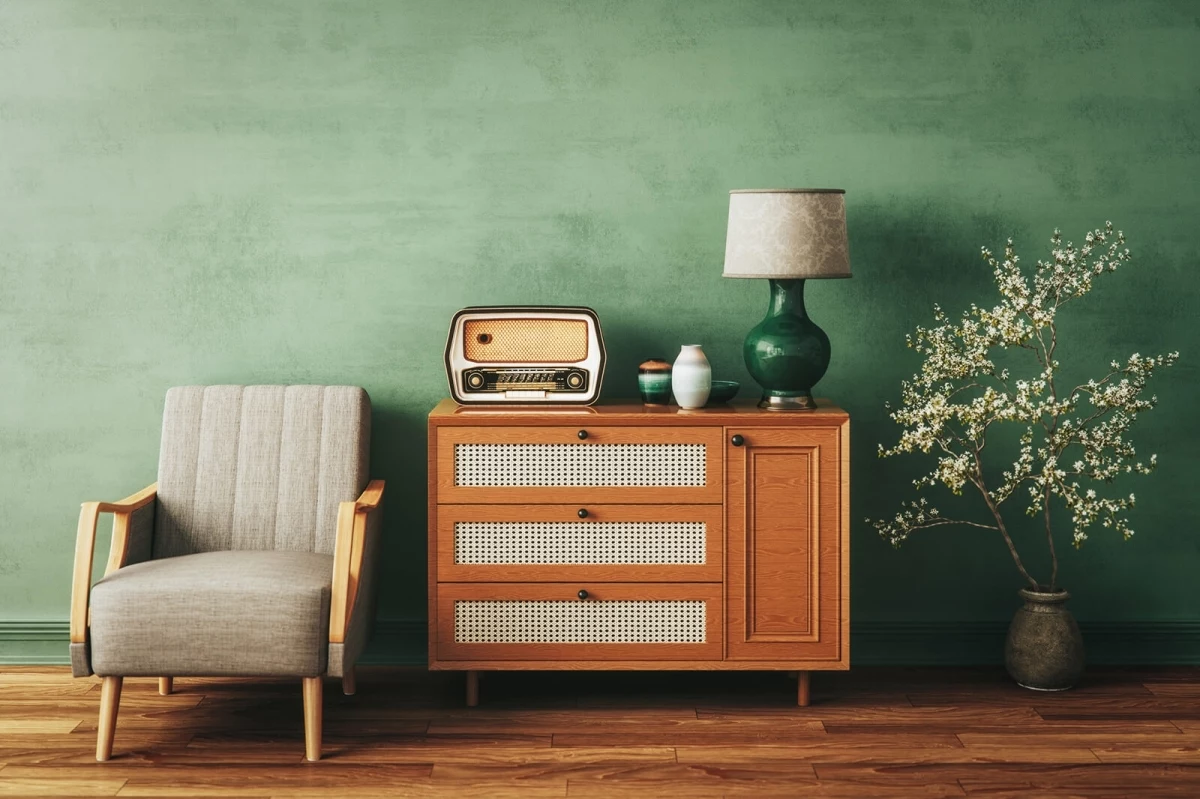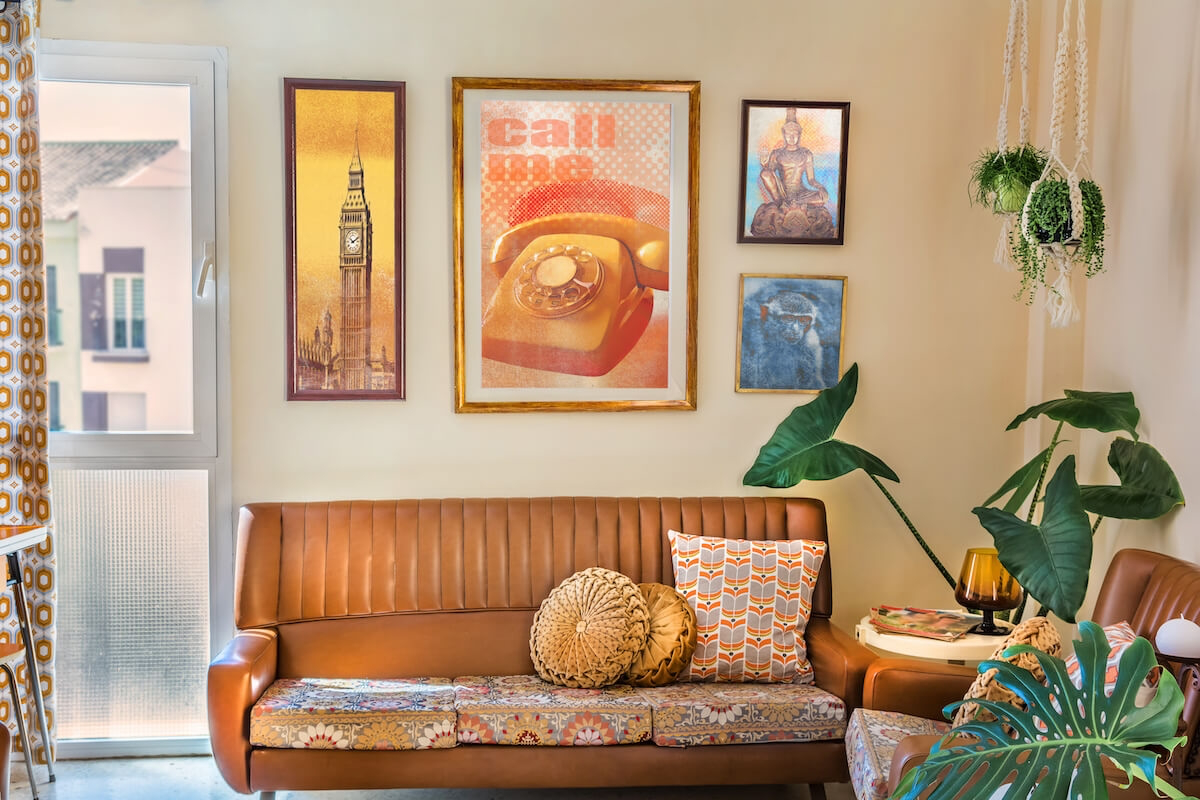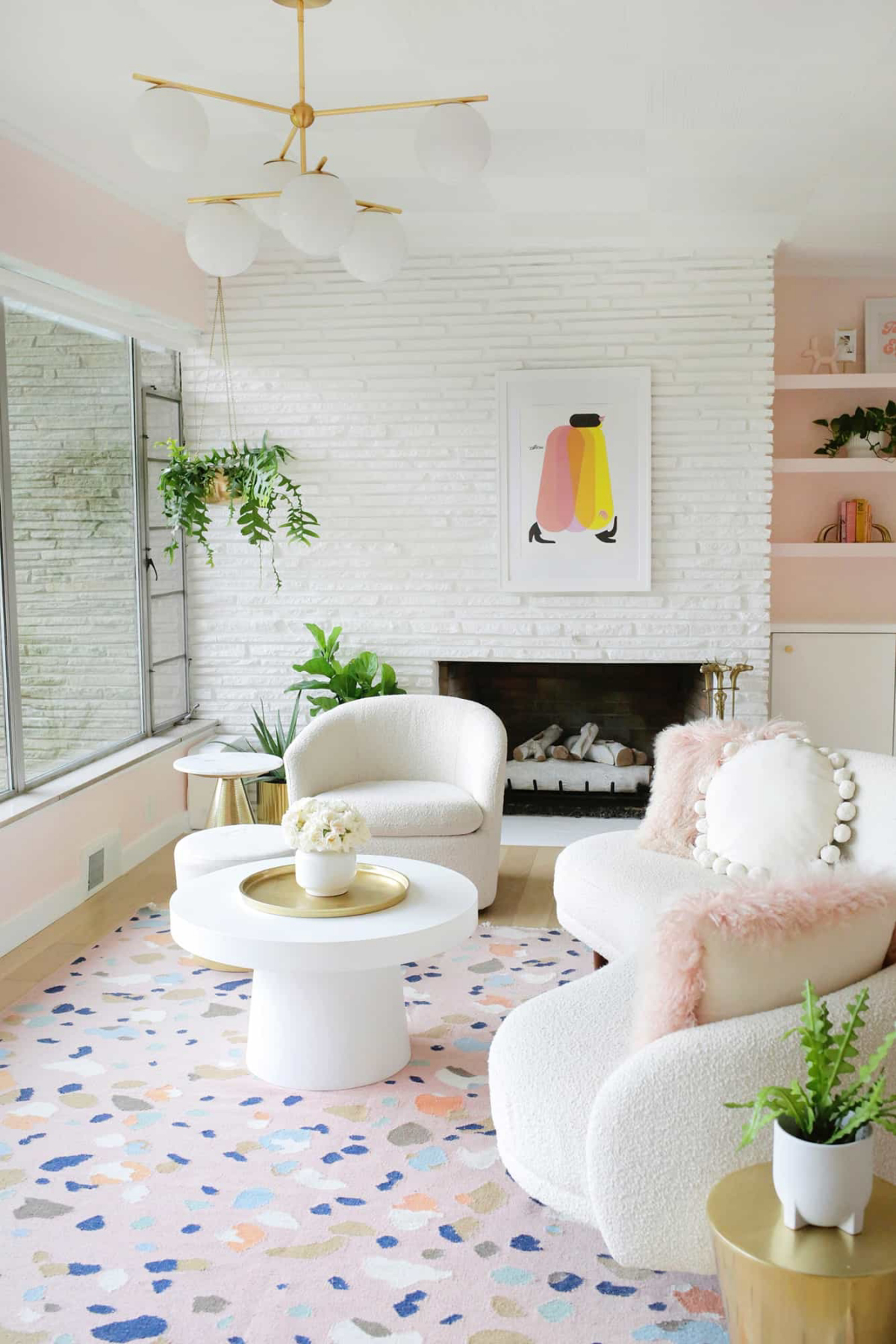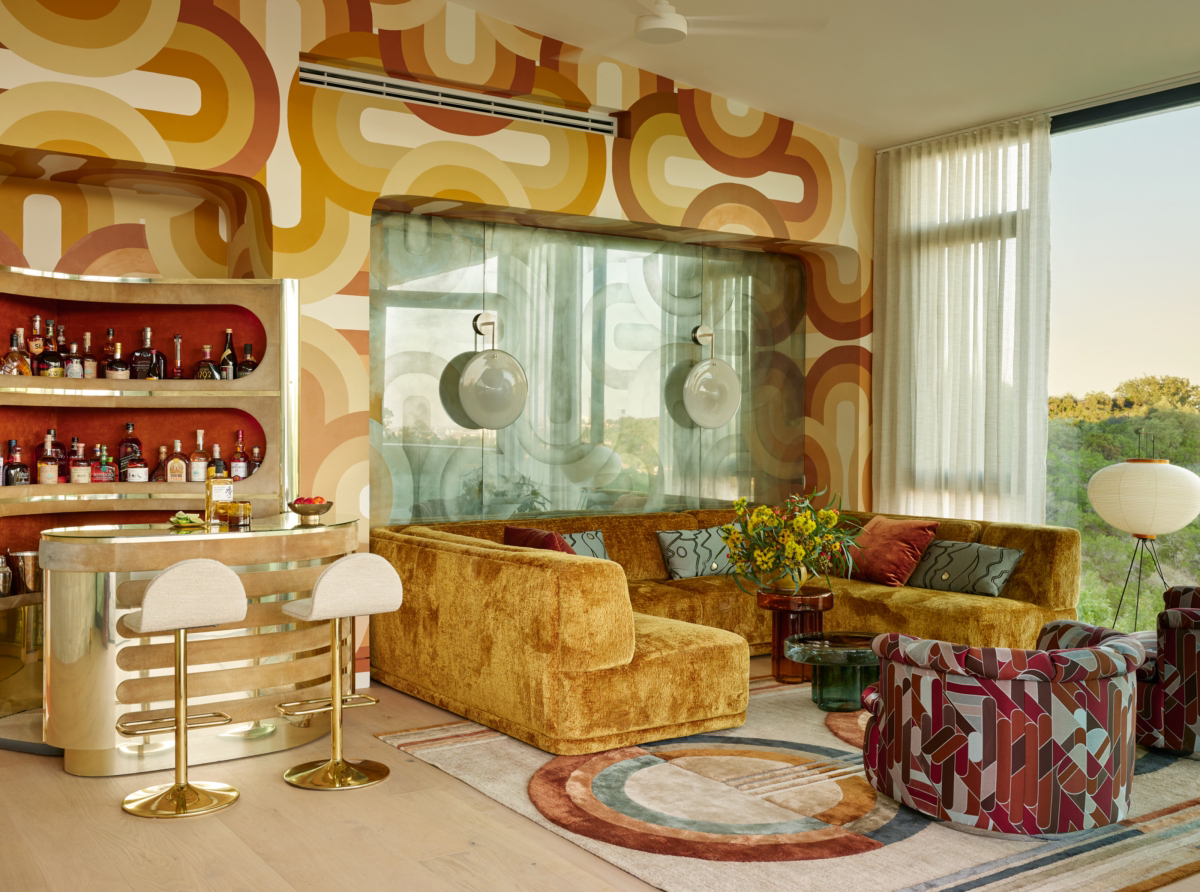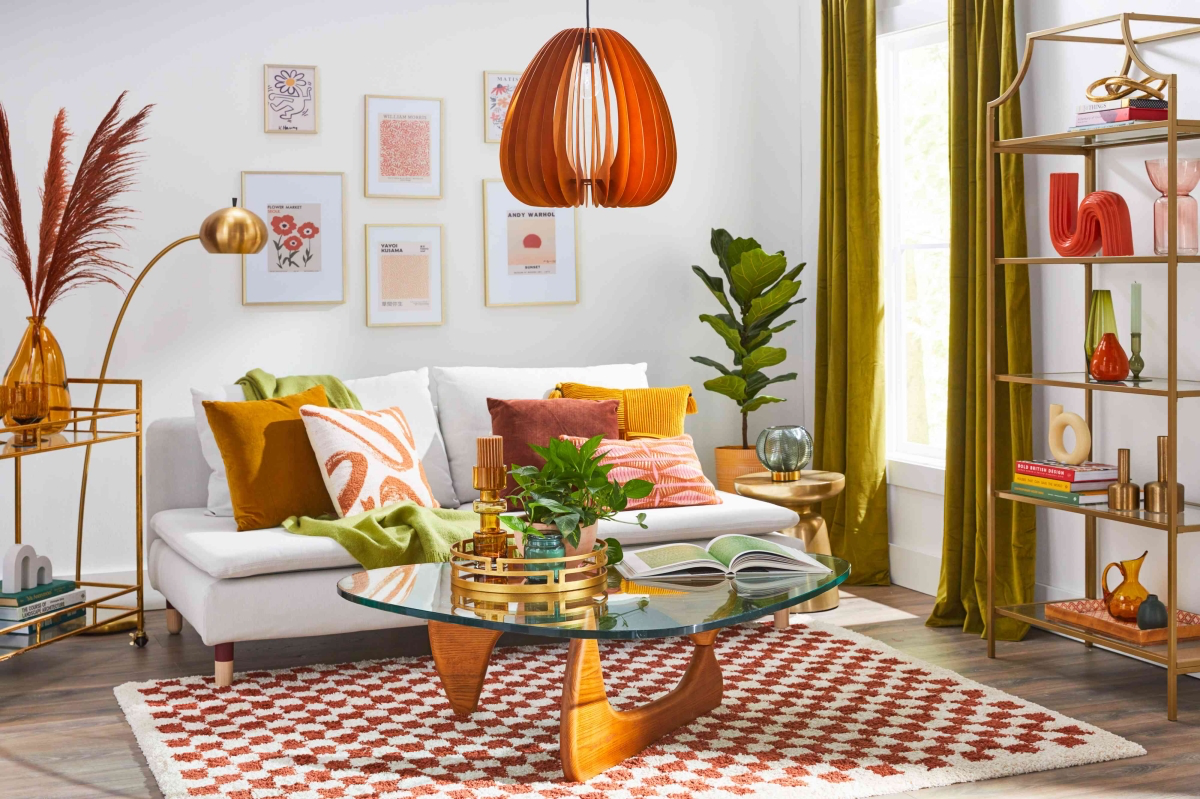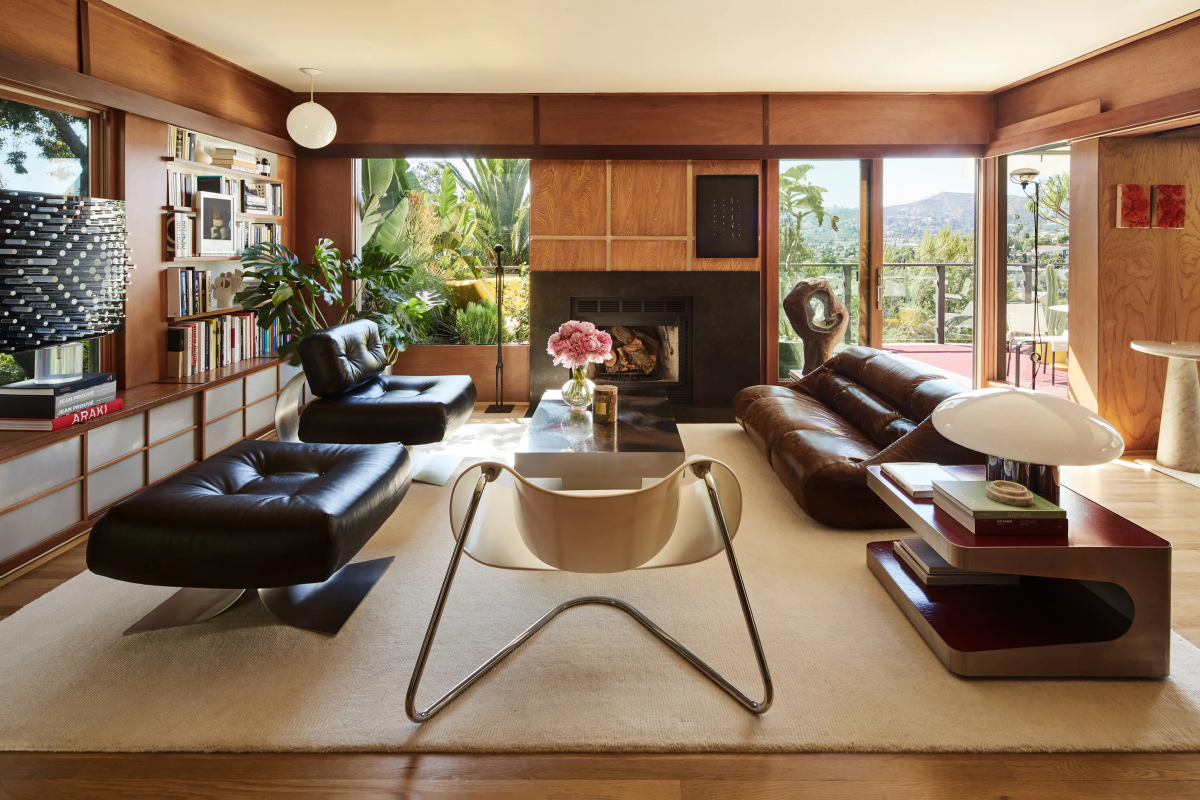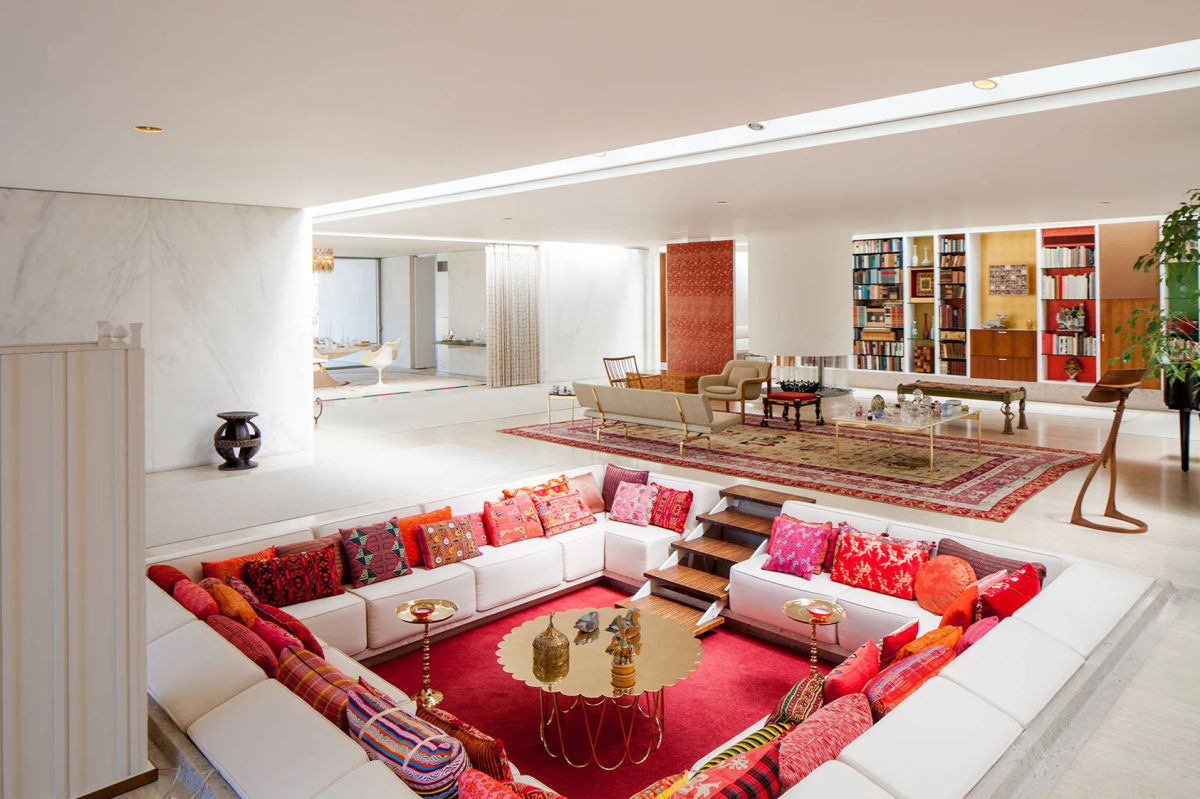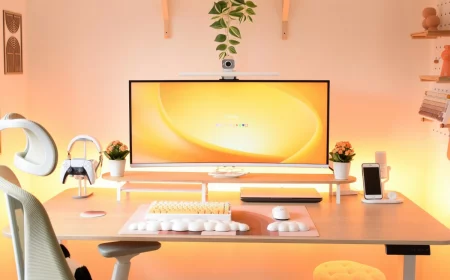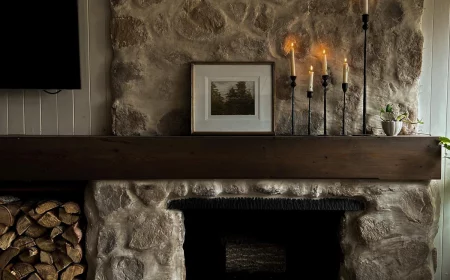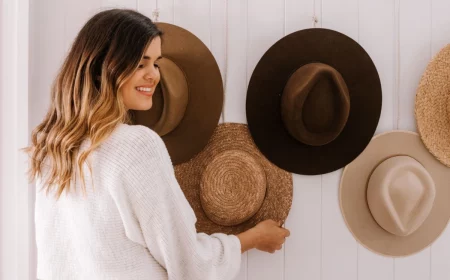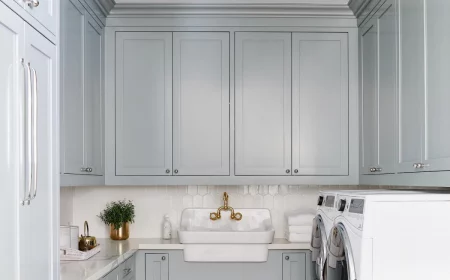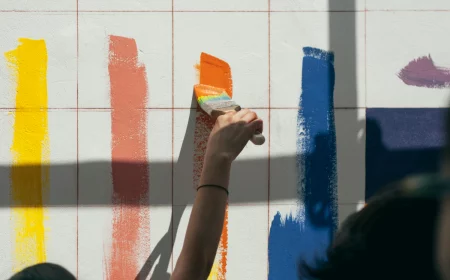Disco Balls & Shag Rugs: All About The 70s Living Room Design
Picture stepping into a room where time seems to have stood still, where shag carpets invite you to sink your toes into their plush depths, and where bold colors and patterns transport you back to the groovy days of the 1970s. That’s the magic of a 70s-inspired living room – a space that encapsulates the spirit of an era known for its self-expression, eclectic style, and a captivating blend of bohemian, glam, and earthy aesthetics. In this comprehensive guide, we’ll take you on a journey through the essence of a 70s living room, its defining characteristics, the diverse styles that defined the era, and help you determine if it’s the right choice for your home.
Let’s take a groovy trip down memory lane with our guide to creating a 70s-inspired living room!
In this article
- What is a 70s Living Room?
- Main Characteristics of a 70s Living Room
- Popular Styles for 70s Living Rooms
- Who Should Consider a 70s Inspired Living Room?
- Who Should Avoid It and Why?
- Advantages and Disadvantages of 70s Living Room Design
- Best Colors for a 70s Living Room
- Best Patterns and Materials for a 70s Living Room
- How to Decorate a 70s Living Room
- Essential Decor Pieces for a 70s Bedroom
- In Conclusion
- More Articles You Might Like
What is a 70s Living Room?
A 70s living room is a nostalgic masterpiece that takes you on a trip back in time, immersing you in an era characterized by vibrant design choices and a free-spirited atmosphere. It’s a space that exudes a sense of nostalgia, inviting you to experience an era when disco balls, lava lamps, and funky wall art were all the rage.
Immerse yourself in an era characterized by vibrant design choices
Main Characteristics of a 70s Living Room
- Groovy Colors: The 1970s were a kaleidoscope of color, and this vivid palette was vividly reflected in 70s living rooms. Avocado green, burnt orange, and mustard yellow were the heroes of this era. Avocado green evoked the freshness of nature, while burnt orange radiated warmth, and mustard yellow brought a cheerful brightness. These unconventional color choices were not just visually striking but also aimed to infuse living rooms with a palpable energy and a comforting warmth.
- Pattern Extravaganza: Patterns reigned supreme in 70s living room decor. It was an era where more was more, and the more patterns, the merrier. Geometric and psychedelic patterns were everywhere, adorning wallpaper, upholstery, curtains, and throw pillows. These patterns, characterized by repetitive swirls, bold shapes, and vibrant colors, added a playful and visually stimulating element to the decor. They invited the eye to dance across the room, creating a dynamic and energetic atmosphere.
- Shag Carpets: A defining feature of 70s living rooms was the luxurious and shaggy deep-pile carpets that covered many floors. These carpets were typically in earthy tones like brown, beige, or olive green. Beyond their plush and cozy feel underfoot, they served a practical purpose by absorbing sound, making them a stylish yet functional addition. Shag carpets created an inviting and tactile experience, encouraging people to sink their toes into their sumptuous depths.
- Funky Furnishings: In the 70s, furniture underwent a transformation with designs that defied convention. Low-slung sofas and lounge chairs embraced a relaxed seating posture, perfect for lounging and conversation. Bean bags, known for their comfort and adaptability, found their way into many living rooms. Modular seating arrangements allowed for flexibility in design and use. Furniture often featured rounded shapes, reflecting the era’s love for curves and fluidity.
Low-slung sofas and lounge chairs are perfect for lounging and conversation
Popular Styles for 70s Living Rooms
The 70s offered a diverse array of design styles to choose from, allowing homeowners to express themselves uniquely:
- Bohemian Bliss: The boho-inspired 70s living room was a true reflection of the era’s countercultural movement. It was a medley of textures, patterns, and eclectic decor items. Floor cushions and oversized pillows invited people to sit comfortably on the floor, creating an informal and relaxed atmosphere. Macrame hangings adorned walls, adding a touch of handmade craftsmanship. Houseplants were abundant, creating a connection to nature and adding to the bohemian ambiance. The overall vibe was inviting, free-spirited, and focused on self-expression.
- Glam Rock Vibes: Glamorous 70s living rooms embraced the glitz and glamour of the era. Metallic accents, mirrored surfaces, and plush velvet upholstery were common elements. Disco balls hung from ceilings, casting shimmering reflections across the room. Sleek bar carts were stocked with crystal glassware and glamorous beverages. The color palette often featured rich jewel tones like deep purples and emerald greens. These spaces were designed to capture the essence of disco-inspired glamour, creating a dazzling and luxurious ambiance.
- Earth Tones Galore: Earthy 70s living rooms celebrated the natural world with a focus on wood and earth-toned elements. Wood-paneled walls and ceilings created a warm and rustic backdrop. Furnishings often featured earthy colors like browns, beiges, and terracottas, evoking the feeling of being grounded and connected to the environment. Large windows allowed ample natural light to flood the space, and indoor plants were a common sight, further reinforcing the connection to nature. These living rooms exuded a sense of tranquility and serenity, making them a serene retreat within the bustling 70s era.
Glamorous 70s living rooms embraced the glitz and glamour of the era
Who Should Consider a 70s Inspired Living Room?
- Nostalgia Enthusiasts: If you have a fondness for the 70s era and want to relive its vibrant spirit, a 70s-inspired living room is the perfect choice. It allows you to surround yourself with the colors and patterns that defined the times. For those who experienced the 70s firsthand, it’s a trip down memory lane, evoking a sense of nostalgia and bringing back cherished memories. Even if you didn’t live through the era, embracing its aesthetics can transport you to a time when disco reigned, and self-expression was celebrated.
- Creativity Seekers: Embracing the boldness and eclecticism of the 70s can ignite your creative side and encourage you to experiment with design. A 70s-inspired living room serves as a canvas for expressing your unique personality. The freedom to mix and match patterns, colors, and unconventional furnishings can be a liberating experience for those who relish the opportunity to break free from conventional design norms. It’s a space that invites you to think outside the box, encouraging a playful and imaginative approach to decor.
- Social Butterflies: 70s living rooms are ideal for those who love to entertain and create memorable gatherings. The funky and welcoming atmosphere sets the stage for social events, whether it’s a disco-themed party, a nostalgic movie night, or a cozy get-together with friends and family. The relaxed seating arrangements, plush furnishings, and vibrant ambiance create an inviting space that encourages people to come together, unwind, and enjoy each other’s company. It’s a place where lasting memories are made.
Embracing the boldness and eclecticism of the 70s can ignite your creative side
Who Should Avoid It and Why?
- Minimalists: If your design preference leans towards minimalism, favoring clean lines and simplicity, a 70s-inspired living room may feel too cluttered and vibrant for your taste. The abundance of patterns, bold colors, and eclectic furnishings can clash with the principles of minimalism, which emphasize a sense of calm and simplicity. The intricate designs and visual complexity of a 70s living room may overwhelm the minimalist sensibilities, making it challenging to achieve the clean and uncluttered look you desire.
- Monochromatic Lovers: Individuals who prefer a monochromatic color palette, where a single color or a limited range of tones dominates the decor, may find the bold and diverse colors of the 70s overwhelming. The era’s emphasis on vibrant and contrasting hues might not align with your preference for a more subdued ambiance. The eclectic and multicolored nature of a 70s-inspired living room may appear chaotic and too visually stimulating for those who appreciate the serenity of a monochromatic environment.
- Averse to Bold Patterns: If you’re not a fan of bold, psychedelic patterns, you might want to steer clear of a 70s-inspired design. These patterns are a defining feature of the era and play a significant role in its visual appeal. For those who prefer a more understated and minimalistic approach to design, the intricacy and vibrancy of 70s patterns may feel jarring and overpowering. The clash between the bold patterns and your design sensibilities can make the space appear busy and less harmonious than you’d prefer.
If you’re not a fan of bold, psychedelic patterns, you might want to steer clear of a 70s-inspired design
Advantages and Disadvantages of 70s Living Room Design
Advantages
- Nostalgic Charm: A 70s living room offers a unique blend of nostalgia and charm, allowing you to relive the glory days of the disco era. It’s a space that sparks fond memories and conversation.
- Creative Expression: It encourages creative expression through the use of bold colors, patterns, and decor choices. It’s a canvas for showcasing your personality and individuality.
- Comfortable and Cozy: The shag carpets, low-slung furniture, and plush textiles create an incredibly comfortable and cozy environment. It’s a place where you can unwind and relax.
This living room is a canvas for showcasing your personality and individuality
Disadvantages
- Can Be Overwhelming: The abundance of colors and patterns can overwhelm some individuals, making the space feel chaotic rather than inviting. Achieving a harmonious balance in a 70s-inspired living room can be a design challenge.
- Maintenance: Shag carpets and textured upholstery may require more maintenance and cleaning than modern design choices. Keeping these elements clean and free from debris is essential to maintain the desired aesthetic.
- Trend-Dependent: A 70s-inspired living room can feel trend-dependent, and its design may require updates as design trends evolve. Staying true to the era’s aesthetics may mean that your space will need periodic refreshes to remain in style.
The abundance of colors and patterns can overwhelm some individuals
Best Colors for a 70s Living Room
- Avocado Green: A quintessential 70s color, avocado green adds an earthy and nostalgic touch to your living room. It’s a hue that exudes a sense of freshness and vitality.
- Burnt Orange: This warm and vibrant hue brings a sense of energy and positivity to your living room. It’s a color that can uplift your spirits and create a cozy atmosphere.
- Mustard Yellow: Mustard yellow adds a sunny and cheerful vibe to your 70s-inspired living room. It’s a color that radiates warmth and complements other bold hues.
- Chocolate Brown: Deep brown tones ground the vibrant colors of the 70s, creating balance and adding a touch of sophistication to your space.
- Tangerine Orange: This bold and zesty color brings a sense of enthusiasm and playfulness to the space. It’s like a ray of sunshine that radiates positivity, making it a fantastic choice for creating an inviting ambiance.
- Harvest Gold: Harvest gold is a rich and warm shade that embodies the cozy and welcoming spirit of the 70s.
- Olive Green: Olive green offers a muted and sophisticated alternative to the bold avocado green. It’s a versatile color that can be used as a primary hue or as a complementary shade in your 70s-inspired living room.
- Deep Purple: Deep purple is a luxurious and regal color that found its place in 70s decor, particularly in glamorous and opulent living rooms. This majestic hue creates a sense of drama and sophistication, making it perfect for those who want to infuse a bit of the disco-inspired glamour of the era.
- Teal Blue: Teal blue is a versatile and visually pleasing color that can bring a sense of calm and balance to a 70s-inspired living room. It combines the tranquility of blue with the vibrancy of green.
The warm and vibrant hues bring a sense of energy and positivity to the space
Best Patterns and Materials for a 70s Living Room
- Geometric Patterns: Embrace bold and repetitive geometric patterns in your upholstery, wallpaper, and decor items. These patterns capture the essence of the 70s and add visual interest to your space.
- Velvet Upholstery: Velvet is a luxurious choice that complements the glam rock style of the 70s. It adds texture and elegance to your furnishings, creating a sense of opulence.
- Shag Carpets: Shaggy, deep-pile carpets in earthy tones are a quintessential element of 70s living room design. They provide warmth, comfort, and a touch of nostalgia to your space.
- Wood Paneling: Wood paneling on walls or ceilings creates a cozy and inviting atmosphere with an earthy touch. It complements the 70s emphasis on nature and adds a sense of character to your living room.
Shaggy carpets are a quintessential element of 70s living room design
How to Decorate a 70s Living Room
- Mix Patterns and Colors: Don’t be afraid to combine bold patterns and colors to capture the essence of the 70s. Experiment with contrasting hues and repetitive patterns to create a visually stimulating environment.
- Incorporate Vintage Pieces: Scour thrift stores, flea markets, and online vintage shops for authentic 70s furniture and decor items. These pieces will add an authentic touch to your space and enhance its nostalgic appeal.
- Add Funky Accessories: Think lava lamps, bean bags, hanging chairs, and disco balls to infuse that unmistakable 70s flair. These accessories capture the era’s playful spirit and add a sense of whimsy to your living room.
- Plants, Plants, Plants: Houseplants were a staple in 70s living rooms, bringing a touch of nature indoors. Consider adding a variety of indoor plants to your space to enhance its earthy and organic feel.
Scour thrift stores, flea markets, and online vintage shops for authentic 70s furniture
Essential Decor Pieces for a 70s Bedroom
- Velvet Upholstery: Velvet was a quintessential fabric in 70s design. Opt for rich jewel tones like deep purple, emerald green, or sapphire blue.
- Mirrored Surfaces: Mirrored surfaces were a hallmark of 70s glamour. Consider mirrored coffee tables, side tables, or entire mirrored walls to add a touch of reflective elegance.
- Metallic Accents: Brass, gold, and chrome were popular choices in the 70s. Look for brass table lamps, gold-framed mirrors, or chrome bar carts.
- Disco Ball: A disco ball is the ultimate symbol of 70s nostalgia and glam. Hang one from the ceiling to instantly transport yourself to the disco era.
- Shaggy Rugs: Shag carpets may not be everyone’s cup of tea, but you can capture the essence of the era with a shaggy area rug. Opt for a deep-pile rug in a rich color like deep red or mustard yellow.
- Geometric Patterns: Bold geometric patterns were ubiquitous in 70s design. Opt for contrasting colors and repetitive geometric shapes to achieve that iconic 70s look.
- Bold Artwork: Look for bold and vibrant artwork that encapsulates the 70s spirit. Consider large abstract paintings, pop art pieces, or graphic prints.
- Hanging Chairs: Hanging chairs were a quirky and fun addition to 70s living rooms. Choose macrame or wicker designs for an authentic 70s feel.
- Lava Lamps: Lava lamps are an iconic 70s accessory that can add a retro and psychedelic touch to your space. Place them on side tables or shelves, and watch the mesmerizing blobs of wax create a soothing and colorful display.
- Vintage Bar Cart: A vintage bar cart stocked with retro glassware and cocktail ingredients can be a glamorous addition to your living room.
- Statement Chandeliers: Look for designs with crystal or glass droplets that catch and refract light, creating a dazzling ambiance in your living room.
Mirrored surfaces were a hallmark of 70s glamour
In Conclusion
As we conclude our journey through the groovy world of 70s living rooms, remember that this design style is all about embracing nostalgia, creativity, and a love for the bold and vibrant. It’s a journey back in time, a visual celebration of an era that encouraged self-expression and free-spirited living. So, if you’re ready to groove to the rhythm of the 70s in your living space, go ahead and embrace this iconic era’s charm and uniqueness. Create a 70s-inspired living room that not only transports you back in time but also reflects your individuality and zest for life.
Now you know why the groovy style of the 70s is perfect for the living room!
